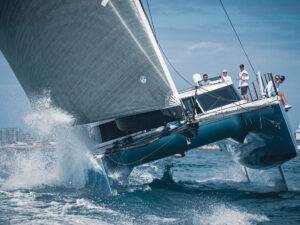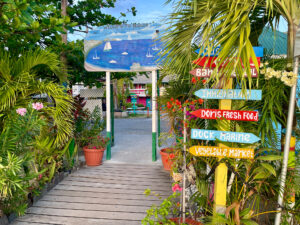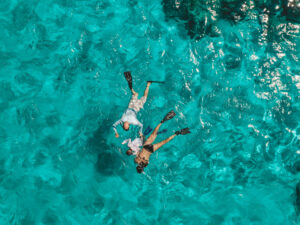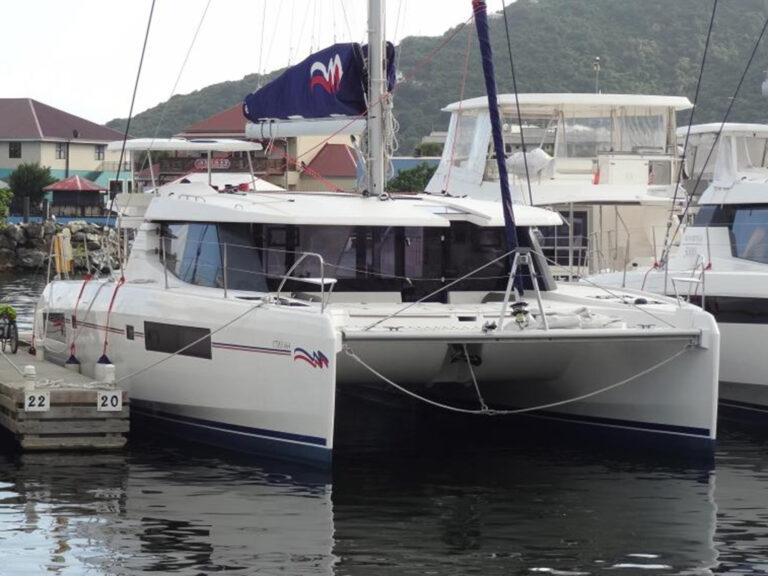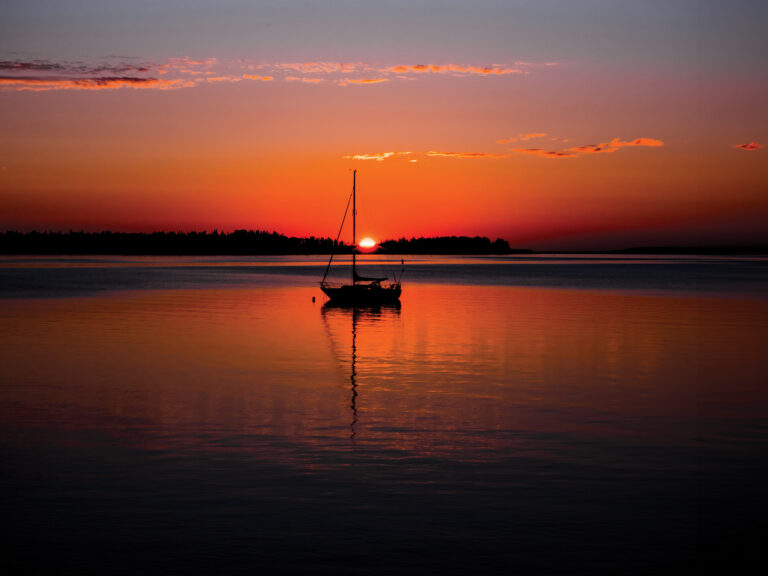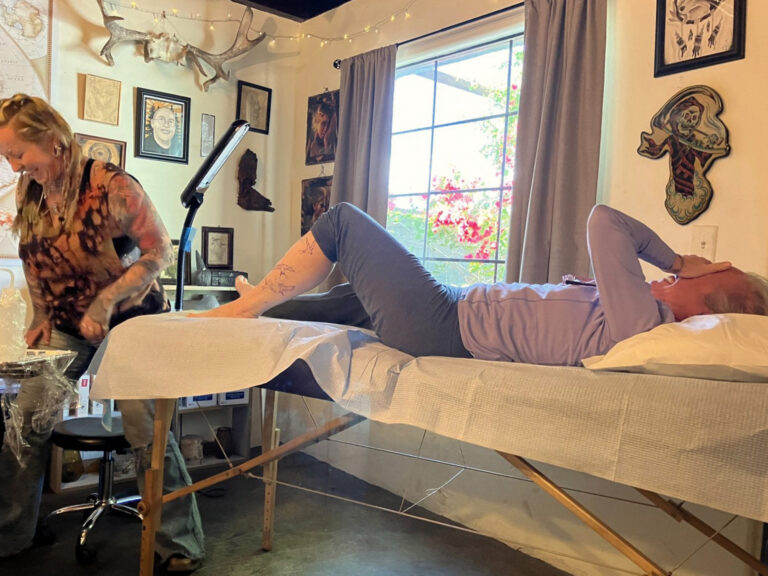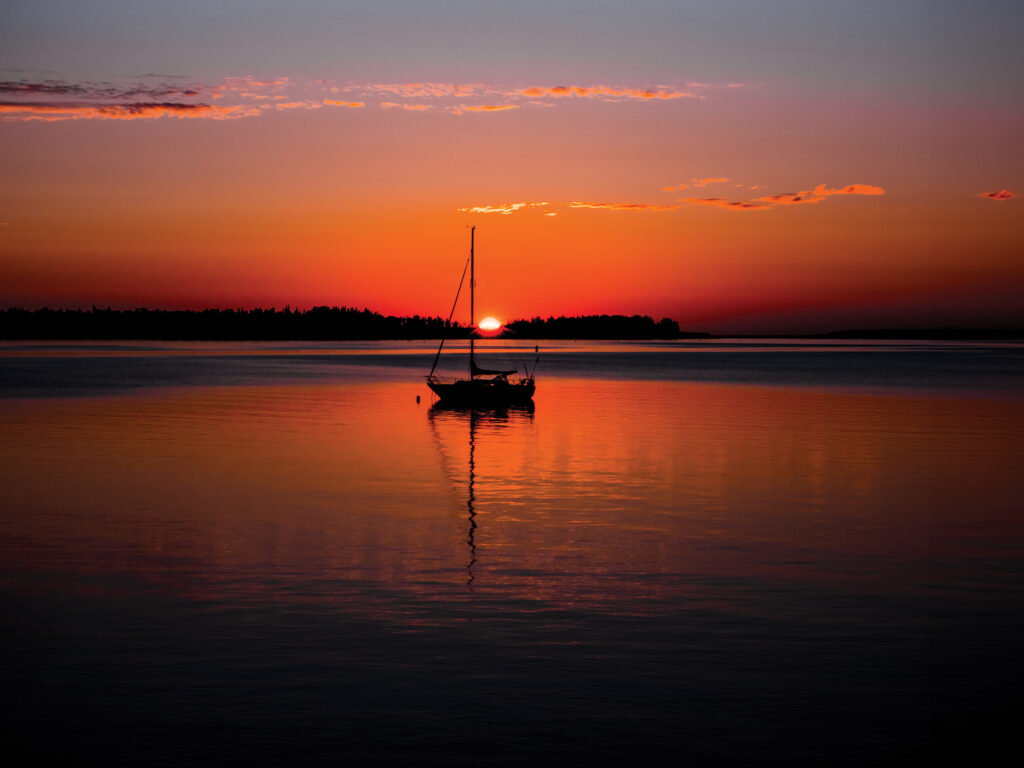
Great Lakes sailors can be somewhat smug when they talk about the lack of salt, sharks, tides and hurricanes. We were no different until we sailed True North, a Beneteau Oceanis 41.1 that we had acquired new in 2018, from Rochester, New York, to Portland, Maine, via the St. Lawrence River and the Canadian Maritimes. We discovered a fascinating world beyond the Great Lakes and an adventure that made giving up those Great Lakes advantages worthwhile.
Equipped with Capt. Cheryl Barr’s Down East Circle Route, we had started planning the trip several years ago but had a pandemic delay. Finally, in late June 2023, with some apprehension about what might come, we left Rochester for an adventure that would be truly life-changing.
I am an experienced sailor with a 100-Ton US Coast Guard Master Captain’s License. I’m also a US Sailing-certified Basic Keelboat Instructor. My spouse, Sandy, has American Sailing Association Bareboat certification. We have cruised together for 15 years on Lake Ontario in the United States, and on Lake Geneva in Switzerland. Even still, this trip would be like nothing Sandy had experienced before. During planning, I often asked her whether we were really up to this. She held fast. It was largely her resolve and courage that enabled this voyage to happen.
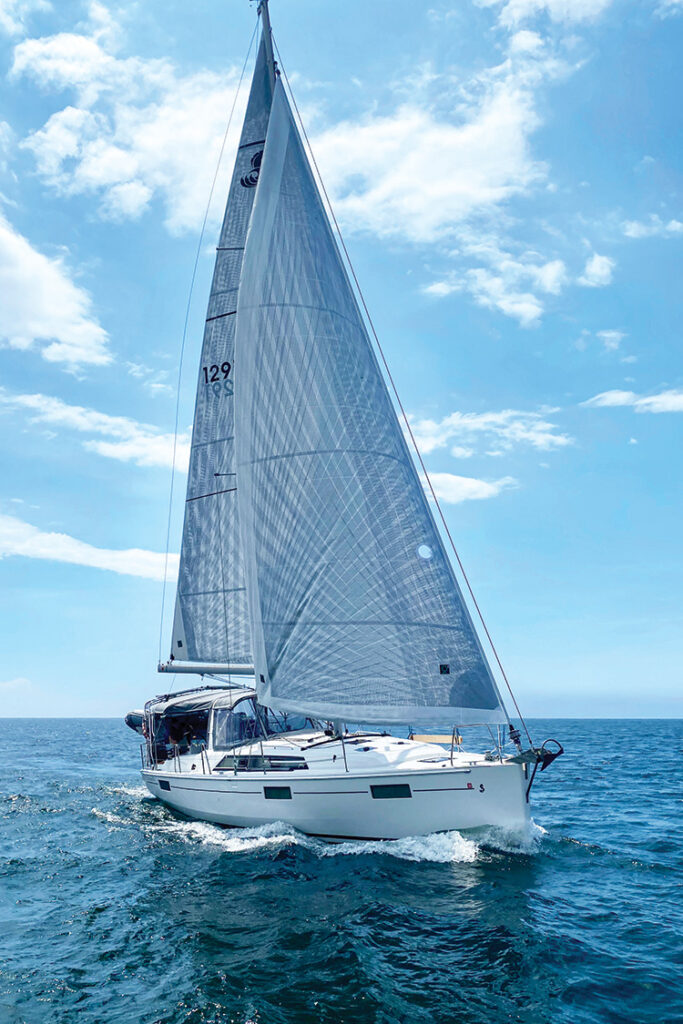
The Down East Circle Route connects Lake Ontario to the Atlantic Ocean by way of the St. Lawrence River, leaving New York State via the Thousand Islands, passing through six Canadian provinces, and crossing the Bay of Fundy to arrive in Down East Maine. This route includes close encounters with whales, seals, puffins and porpoises, as well as some of the most spectacular scenery that maritime Canada and the Northeast United States have to offer.
To prepare for the trip, we made numerous boat improvements, such as an arch with davits, a full cockpit enclosure, solar panels, Starlink, zinc anodes (replacing the magnesium ones used in fresh water) and an inverter. Our other preparations included upgrading our boat insurance, arranging for mail and travel medical insurance, and figuring out what to pack for temperatures that would range from 30 to 80 degrees Fahrenheit.
As we departed from our home dock, we were fortunate to be escorted on the first few legs by sailing friends, an act of kindness that tempered the emotion of leaving home for an extended period. On the first day, a rare, thick fog set in along the south shore of Lake Ontario. Although unexpected, it enabled us to practice using our radar and foghorn. This was useful for the “real” fog we would encounter in Nova Scotia and Maine, where it is supposed to be.
After overnight stops in Fairhaven, Sackets Harbor, and Clayton, New York, we entered Canada by way of Brockport, Ontario, along the St. Lawrence River, and caught up with a sailing couple we had met the year prior while cruising the lake, when we all realized we’d be making the same journey. We sailed as a loose flotilla for the early part of the cruise, a strategy that was helpful to build confidence for both crews, and that provided welcome company and occasional assistance.
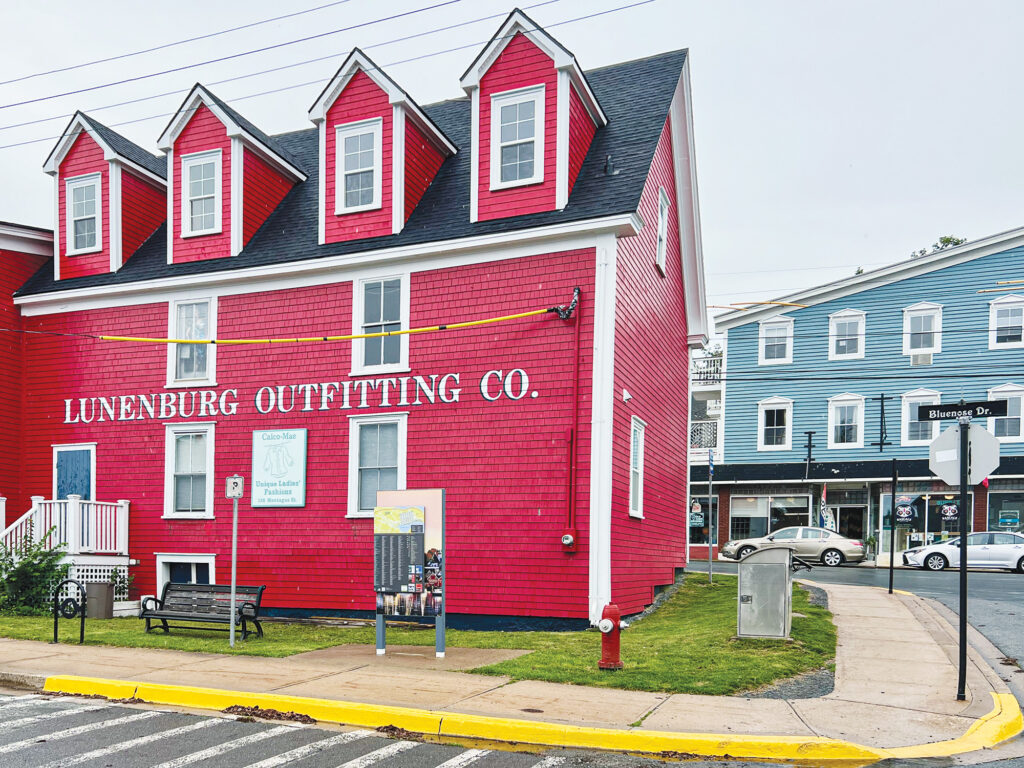
There are seven shipping locks along the St. Lawrence Seaway, two in the United States and five in Canada, designed to raise or lower seagoing freighters. Pleasure boats are tolerated, but long, unpredictable waits are the rule.
As we made our way down the river, we began to experience strong currents, something new for lake sailors. Heading downstream meant these currents added to our boatspeed. I learned the hard way that you need extra space to clear an obstruction from upstream when True North swiped a navigational buoy while giving way to a freighter coming up the shipping channel. Fortunately, there was no damage, other than to our pride.
On the other hand, the current allowed us to cover record distances each day, until we reached Montreal. The last lock lets out downstream of Montreal, so, to visit the city, we needed to head upstream several miles, fighting 5 to 6 knots of current. With our 45 hp engine nearly full out, what would normally be 8 knots over ground was only 2. After reading that many sailors have had to skip Montreal and move on to Longueuil or other points downstream, we felt fortunate to dock in the heart of Old Montreal. We thoroughly enjoyed the culture, cuisine and atmosphere of this cosmopolitan city. We also caught up with friends we’d met several years in a row while cruising Lake Ontario.
Moving on to Quebec City added tides to our repertoire of unfamiliar phenomena. In addition to river currents, we also needed to consider tidal currents, the interplay between tidal and river currents, and depth changes. The Canadian Hydrographic Service publishes a 130-page tide and current document, but we kept it simple, timing departures a few hours before high tide. The combined river current cancels the slowing tidal current, causing slack water to occur before high tide. Then the river current combines with the ebbing tide to give the boat a nice push downstream. Tides are a big factor in Quebec City, where the main marina has a dedicated lock to lift and lower boats to meet the marina’s depth, which is maintained constant.
I had yet another lesson when heading out of an anchorage near Sorel-Tracy where, according to charts, tides aren’t yet a factor. We ran aground, even though we traced our breadcrumbs from when we entered the anchorage.
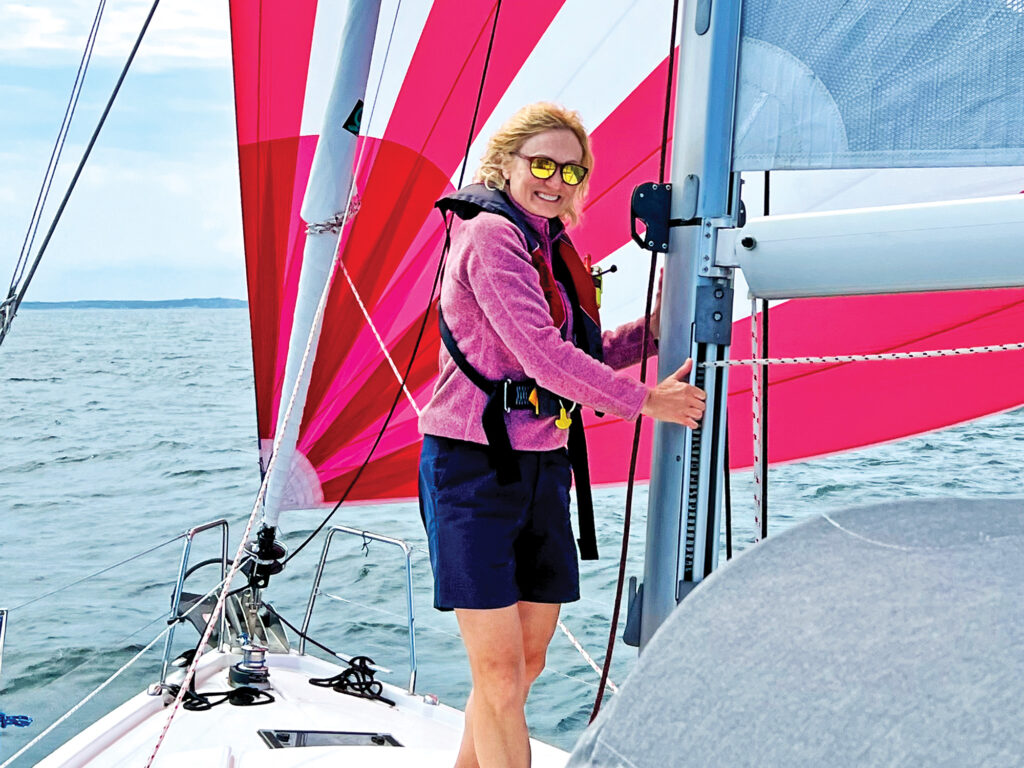
We tried, to no avail, to twist True North off the shoal with the bow thruster. I eventually lowered our dinghy, Lil’ North, and towed True North astern with all the might that the dinghy’s 10 hp outboard could muster, while Sandy reversed hard with the diesel. This did the trick, and we met out in deeper water to collect our wits and move on. Many cruisers use two-way headsets (“marriage savers”) while anchoring or docking. They were invaluable here too.
Quebec City is a beautiful, European-spirited town, rich in history, culture and delicious cuisine. We lingered several days to enjoy the sights and soak in as much civilization as possible before heading into increasingly remote territory.
Moving on, we added salt water to currents and tides, expanding our sailing experience even further. I observed that salt added buoyancy, enabling the boat to move faster. I also observed the mess it makes of everything. We couldn’t stop imagining salt water flowing through the various raw-water circuits, leaving a trail of corrosive destruction. But it was a small price to pay for the experience that it afforded.
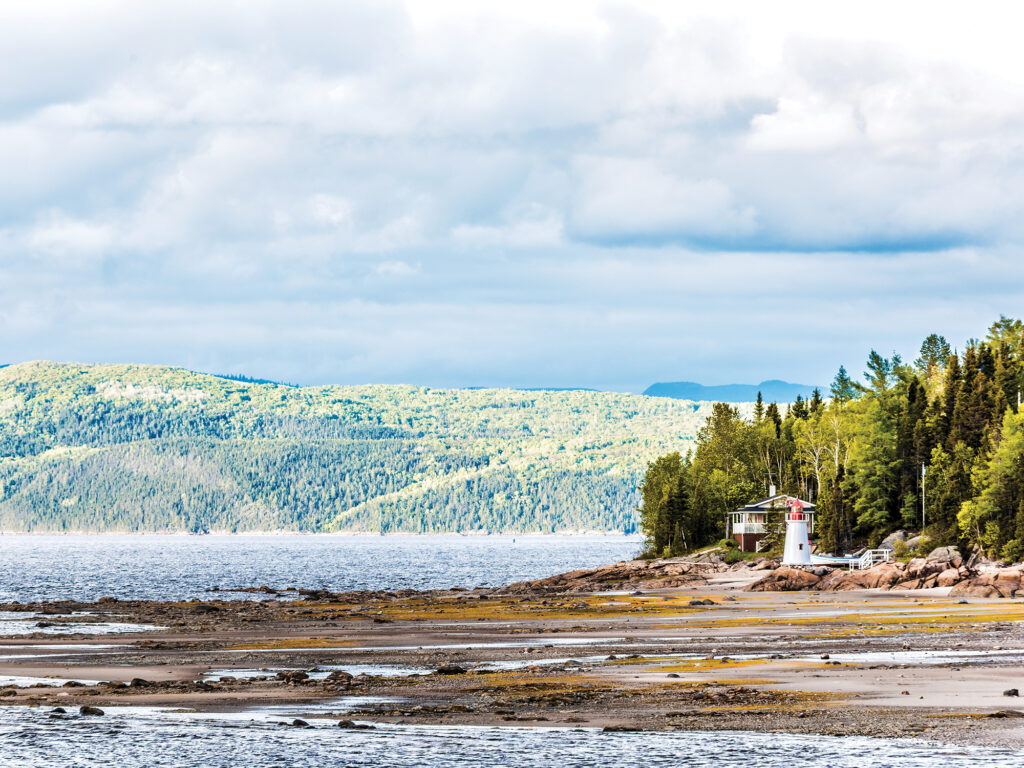
A short detour to Tadoussac, at the mouth of the Saguenay Fjord, allowed us to get up close with beluga and minke whales, as well as seals, amid a landscape reminiscent of Alaska or Norway.
We never stopped being impressed with the kindness and generosity of people we met in rural Quebec. Fishing boats were moved around to make room for us in ports. Dock neighbors, to whom we were complete strangers, offered the keys to their vehicles to facilitate our provisioning runs. We preferred to walk to stretch our legs, but the gesture was so kind that we always brought a little something back as a measure of gratitude for those who offered.
The northernmost part of our route found us slipping briefly above the 49th parallel before veering southeast to Gaspé. The river widens progressively from this point as it flows toward the Atlantic. Marinas are fewer and farther between, but there are anchorages and surprisingly welcoming fishing ports.
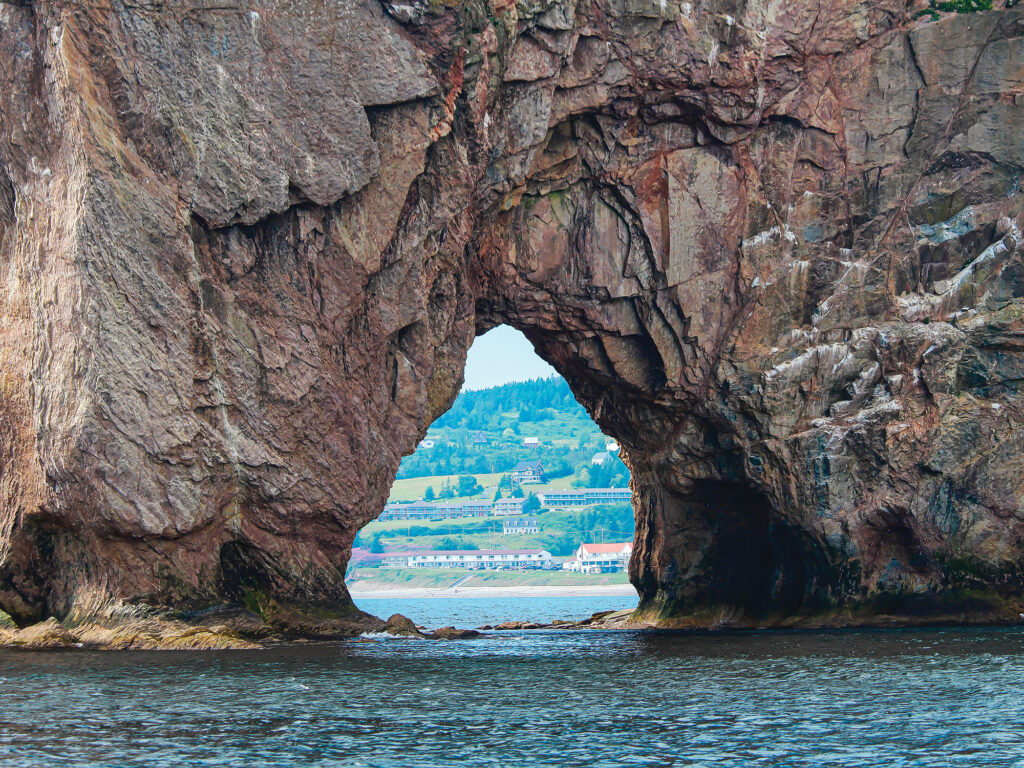
Gaspé, near the mouth of the St. Lawrence, is stunning. Pictures of the region’s Percé Rock were an inspiration for this trip and became emblematic. This was also the coldest part of the trip, with nighttime temperatures dipping into the 30s in August.
Gaspé is a peninsula that also boasts a national park, a quaint town and the luminescent green Emerald Falls. We rented a car to explore. Driving felt strange after so much sailing. When eventually sailing on from Gaspé, we got one more close-up view of the majestic Percé Rock, this time from the water.
And then, there was the Atlantic Ocean. We worked our way down the coast of increasingly remote Quebec, anchoring or squatting space in fishing ports. Again, we were delighted by how we were welcomed. Speaking French certainly helped, but Anglophone sailors we met had had similarly positive experiences.
We were impressed with the generosity of people we met. Complete strangers would offer their vehicles to facilitate our provisioning.
We crossed the Chaleur Bay toward New Brunswick. This bay is notorious for aggressive sailing conditions, and we close-reached 80 nautical miles in 30-knot winds and 6-foot seas for most of the day. Sandy is not a fan of heeling, chop or gusts, yet she held on bravely as we plowed forward. The reward was a calm anchorage in Miramichi Bay, New Brunswick, and a beautiful sunset.
After a day there, we crossed the lower stretch of the Gulf of St. Lawrence to Prince Edward Island, the smallest Canadian province, and tied up at the Summerside Yacht Club and Marina on the western side. We did need maintenance after some pretty tough sailing, and we provisioned, washed clothes and crew, and enjoyed town life for the first time in weeks. We rented a car and took a side trip to Charlottetown, the main city on the island, and caught up with a colleague from 20 years ago who lives there.
After several days, we crossed back to Nova Scotia, a province we were eager to visit. We were welcomed by an anchorage with an unspoiled beach full of clams and crabs. It was fascinating to watch their behaviors and the small geysers caused by clams buried a few inches below the sand.
We worked our way east along the coast, entering St. George’s Bay for another tough sail, with strong winds on the nose and choppy seas. We got into position to traverse the Canso Canal, without which we would have had to add significant distance to circumnavigate Cape Breton. After the canal, we had hoped to detour to visit Bras d’Or Lake. Unfortunately, the forecast required us to move on quickly, but we promised ourselves we’d sail back there another time.
The Canso Canal moved us from the Gulf of St. Lawrence to the wide-open Atlantic Ocean. From this point, we experienced yet another new phenomenon: swells. They are much more pleasant than the short, irregular chop we experience on the Great Lakes. Nevertheless, there can also be chop, which taught us the meaning of a confused sea state.
We worked our way down the southeast coast of Nova Scotia, stopping mostly in beautiful anchorages, usually encountering seals. Halifax, Nova Scotia’s principal city, is home to The Binnacle, where, like many sailors, we made our pilgrimage to buy parts and supplies. Halifax is full of interesting history, delicious restaurants and an attractive waterfront. As the nearest city to the site of the sinking of the Titanic, it played a key role in rescuing the survivors and is the burial place for many who did not survive.
We worked our way down to Lunenburg and then Yarmouth, our departure point for crossing the Bay of Fundy and entering Maine. We left Yarmouth in pitch-dark in order to arrive in Maine in daylight. Despite the bay’s 50-foot tides, the crossing was uneventful. We had expected to find lobster traps as we approached Maine but were astounded by the sheer number of them, including in the middle of marked channels and anchorages.
Checking in with US customs was uneventful: After a quick video tour of our boat using an app, the officer cleared us. We then worked our way down the Maine coast, with a prolonged stop in Bar Harbor. We anchored in the Skillings River, a short dinghy ride from downtown at high tide, when the sandbar connecting Bar Island is submerged. Bar Harbor is touristy but maintains its charm and is, of course, the gateway to Acadia National Park and all its beauty.
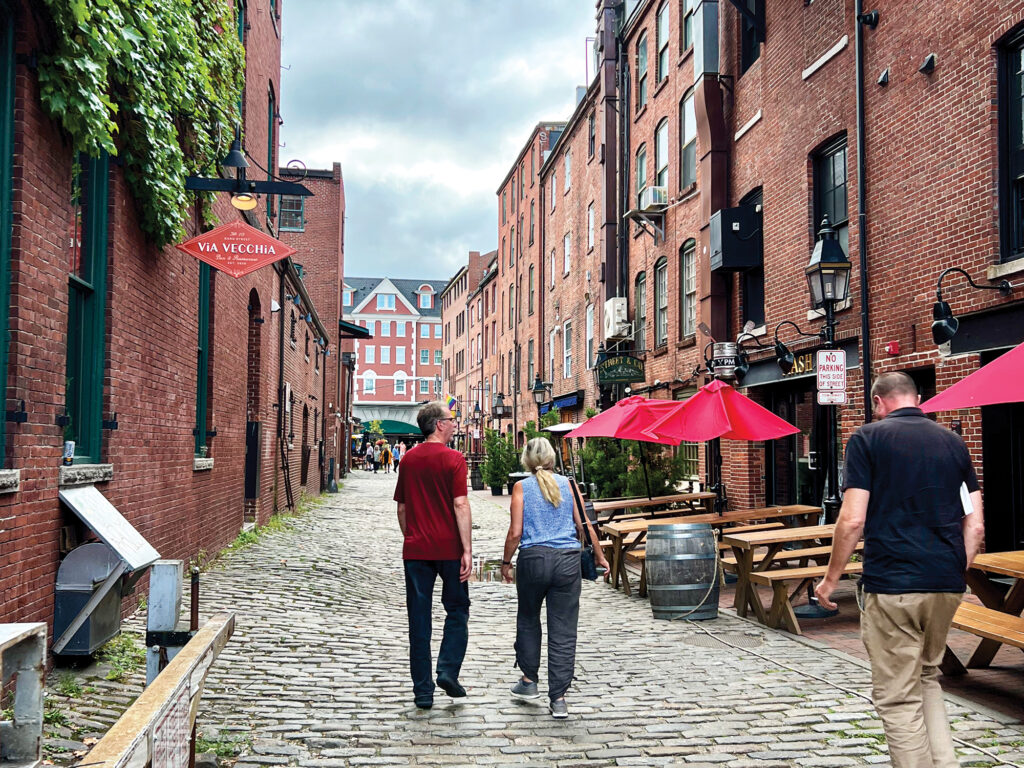
From there, we headed out into Penobscot Bay and enjoyed numerous anchorages, lobster-fishing villages, and a steady flow of classic windjammers. In Camden, Maine, the annual Windjammer Festival was in full swing. A short, steep climb on foot took us to the 780-foot peak of Mount Battie for spectacular views of Camden Harbor and Penobscot Bay.
From Rockland, Maine—with its active fishing industry, red-brick-lined downtown, and ferry terminal—we worked our way down the coast, anchoring in the lobster-fishing towns of Tenants Harbor and Port Clyde, home to the lighthouse we knew from the movie Forrest Gump. In lovely Boothbay Harbor, we stopped at Boothbay Harbor Marina, the most welcoming marina that we’d visited.
After a final night at anchor in Harpswell, Maine, we made the final run into Portland, where we were met by the thickest fog we’d encountered during the entire journey. Anything more than 50 feet off our bow was not visible, including the city. To make our arrival even more dramatic, Hurricane Lee was expected in a few days. We had just enough time to get from there to Yarmouth, where we hauled out in record time—just before the storm hit.
The trip truly changed Sandy and me. We increased our confidence and learned to face our fears. And we became even more familiar with boat systems—mechanical, electrical, plumbing, navigational and communications alike.
We also changed our future plans, now wanting to make a sailboat our floating summer home. While we missed our friends and family, we learned that one can have an interesting social network while cruising. We were reacquainted with old friends, and made many new ones.
The boating community shares common interests and experiences, and cruisers look out for one another, like in a real neighborhood. If you’re considering the Down East Circle as a future cruise, by all means, do it.

